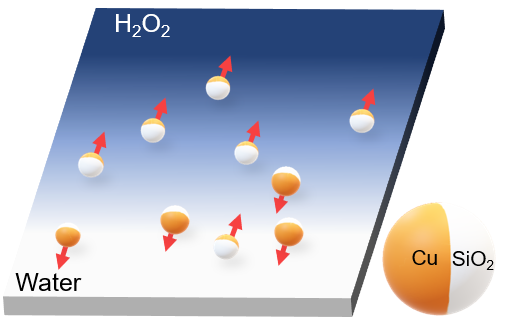
Z. Xiao, A. Nsamela, B. Garlan, and J. Simmchen
Angew. Chemie Int. Ed., Feb. 2022
chemRxiv: 10.26434/chemrxiv-2021-sxqm1
DOI: 10.1002/anie.202117768
The ability of artificial microswimmers to respond to external stimuli and the mechanistical details of their origins belong to the most disputed challenges in interdisciplinary science. Therein, the creation of chemical gradients is technically challenging, because they quickly level out due to diffusion. Inspired by pivotal stopped ow experiments in chemical kinetics, we show that microfluidics gradient generation combined with a pressure feedback loop for precisely controlling the stop of the flows, can enable us to study mechanistical details of chemotaxis of artificial Janus micromotors, based on a catalytic reaction. We find that these copper Janus particles display a chemotactic motion along the concentration gradient in both, positive and negative direction and we demonstrate the mechanical reaction of the particles to unbalanced drag forces, explaining this behaviour.

